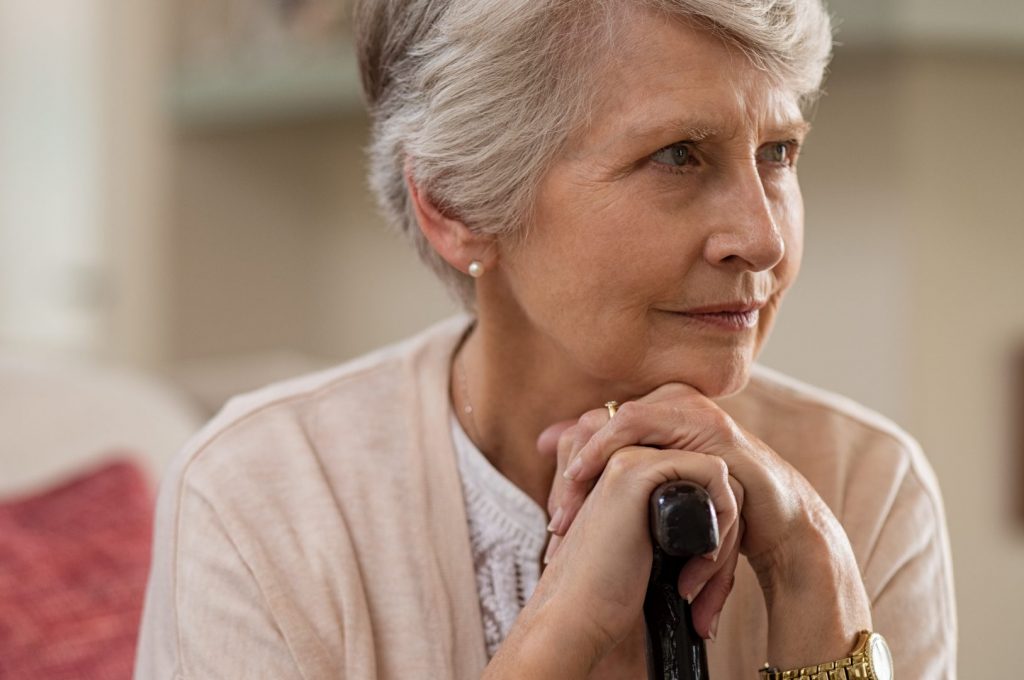
This woman surveys her home environment and contemplates what she will need to do to get through the day with any changes she might need to make
As we age in our homes, we are going to find things that need to change because we are changing – our needs, our abilities, our preferences, and our outlook on life. Therefore our homes and living environment need to change along with us to keep pace with what we are doing or they no longer are going to match what we need or expect of our homes.
Adapting, both as a design strategy and as a coping response, means doing what is required at the time to deal with a given situation. It may mean a temporary or long-term response to what we are facing, but it will enable us to have a safer and more functional living space. The same concept would apply to our outside spaces and even our cars and offices.
We constantly are being faced with a variety of challenges – most of which we immediately handle and dismiss. Some are more urgent than others. We move on.
As we go throughout our day-to-day activities, we are going to have little aches and pains that interrupt our daily flow. We change course and deal with what we are facing. We postpone an appointment, lay down until we feel better if it will pass quickly, use a mobility aid (brace, cane, crutch, or walker) temporarily, do a different activity, find a place to be off by ourselves, go into a darkened space, or find some other way to mitigate or cushion ourselves from the temporary challenge we are facing.
Some things that we and others face are going to be classified under the annoying category. Say that we wake up with a pretty strong headache that affects our balance or mobility and possibly our ability to focus our eyes or to concentrate. We can go back to bed, pull the covers up, and wait for it to pass. But what if it doesn’t go away quickly? Are we going to stay in bed for a couple of days? So, we look for ways to adapt our environment to cope with our temporary challenge. This is what adaptability is all about – making changes, however long-term or permanent, as needed to allow us to continue living in our space and continuing on life’s journey as well as we can.
It such cases, having already made changes in flooring and lighting may enable us to cope with walking, balancing, or seeing well in certain areas of our home or feeling less stress in coping with the physical challenges of our home while waiting for our physical condition to pass. This is where having strategic grab or safety bars installed near the entrance to the tube or shower, at the entrance door to the home (especially if there is any kind of a step present), and chair rail along hallways will give us the support we need without even thinking about why they’re there or why we installed them.
As we have other challenges that arise from time-to-time, we are going to make temporary fixes. Again, this is what adapting is all about – it doesn’t necessarily mean that we create a long-term solution although that certainly is a potential response. We more likely are just going to determine what we need to get through this episode we are facing and then move on with our lives. They should return to a degree of normalcy, or we will face a longer-term solution to what is bothering us.
If we cannot use one of our hands to opening objects, to grasp things, or have any strength in it, we compensate by using the other hand – even if it is not our normal hand. We might be right-handed and have to rely on our left one temporarily to get us through the day and next few days, managing as well as we can. Of course, we can help mitigate this by getting in the habit of using both hands as much as possible (both eyes or both feet) to perform normal tasks. Then, if we are faced with the inability or difficulty or using our hands, wrists, elbows, or other joint, we will have been conditioned to compensate rather well by shifting to the other side of our bodies to do what needs to be done. Again, this is adapting, but we were prepared for it in advance.
We don’t know when or how often we will need to shift from our customary activities to an alternate one, but as much as we can do in advance to prepare for it – strengthening our balance and use of our weaker hands, eyes, and joints to make them stronger will help us in our normal activities as well as when a need arises.
We know that we will have various challenges and setbacks as we go through life – whatever our starting point or current level of performance happens to be. We just need to be able to roll with it and adapt as we can to get past it and move on. Sometimes, the other end of the challenge will present a new normalcy, and sometimes, we will return to our base point.
